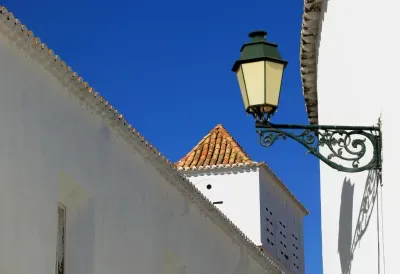Capela dos Ossos (Faro)
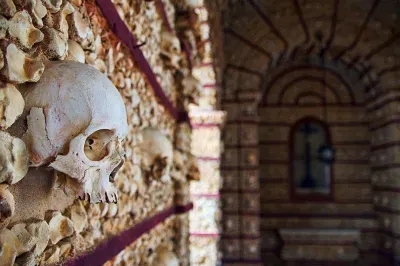
Without doubt the most macabre of Faro's many attractions is the Capela dos Ossos (Chapel of the Bones), a minuscule ossuary chapel lovingly decorated with the bones and skulls of over 1000 human skeletons. The chapel forms part of the beautiful 18th century Igreja da Nossa Senhora do Carmo (Our Lady of Mount Carmel) Church, with its whitewashed Baroque exterior and richly gilded interior.
Igreja do Carmo, Faro

The Igreja do Carmo in Faro, with its Baroque façade and twin bell towers is one of the finest churches on the Algarve. The Carmelite church was built throughout much of the 18th and 19th centuries, starting in 1719. Disaster struck in 1755 when the great earthquake that hit Portugal badly damaged the church. However, a new facade was designed by mason Diogo Gonçalves including the now iconic bell towers.
Teatro Lethes
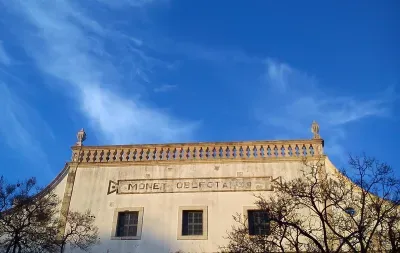
The Lethes theatre building may look a little tired on the outside, but don’t let that put you off. Step inside and you will be transported to the latter half of the 19th century. The décor of plush velvet, painted ceiling and exquisite wooden carvings will make you feel as though you are in a bijoux version of a historic Italian opera house. There are four tiers arranged around the intimate auditorium and if you go to a performance here try to get seats in one of the boxes for that once-in-a-lifetime experience. It won’t cost any more than the ordinary seats.
Palácio Bivar
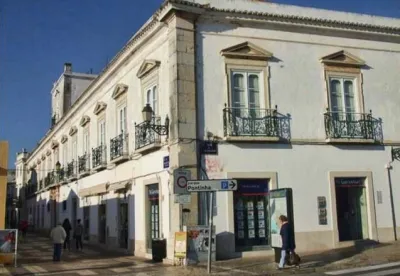
Faro’s Bivar Palace, close to the marina is a fine example of the Neoclassical style of architecture and is probably the best example on the Algarve. Built in 18th century, with later additions in 19th and 20th centuries, the two storey palace has a symmetry which is very pleasing to the eye. At the front there are bay windows, each topped with a triangular pediment. There are wrought iron balconies and a balcony window with a lookout tower.
Faro Maritime Museum
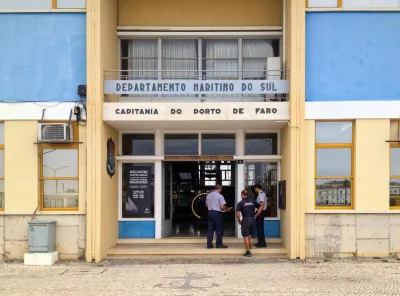
Faro has a seafaring tradition going back to the times of the Phoenicians and in the small but interesting Maritime Museum you can learn about all things nautical connected with the area. It only costs around €1 to enter and is free for children under 6, and you can easily spend some time admiring the vast collection of exhibits on display in the museum’s three rooms.
Ermida de Nossa Senhora do Pé da Cruz
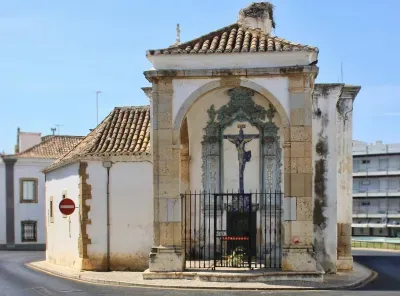
The Ermida de Nossa Senhora do Pé da Cruz (hermitage of Our Lady at the Foot of the Cross) is Largo do Pé da Cruz (formerly Largo do Poço dos Cântaros), a little way away from Faro's other sights.
The original chapel was built here around 1644 but was almost completely destroyed by the Great Earthquake of 1755. The understated, whitewashed Baroque style building we see here today was built in 1861.
Faro Marina
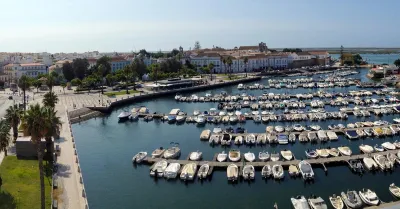
It can be fun to spend some time admiring the flashy yachts on display in the marina, maybe stopping off for refreshments in one of the waterside cafes. Just around the corner is the Porta Nova Pier, from which boats take day trippers out to enjoy the birdlife and beaches of the Ria Formosa Natural Park. On balmy summer nights, it’s a pleasant stroll from the marina, down the waterfront promenade to the Old Town.
Arco da Vila
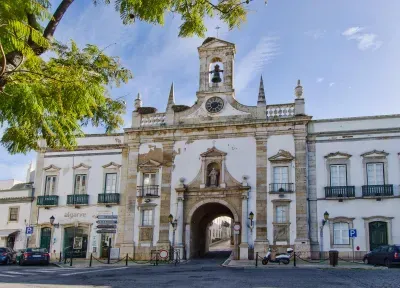
Faro's fine neo-classical archway is the entrance to the Algarve city's old quarter (Cidade Velha). It was built on the site of a much older medieval gateway in the city walls by order of Bishop Francisco Gomes do Avelar in 1812. He oversaw much of the reconstruction of Faro after the devastating 1755 earthquake.
Paço Episcopal - Faro
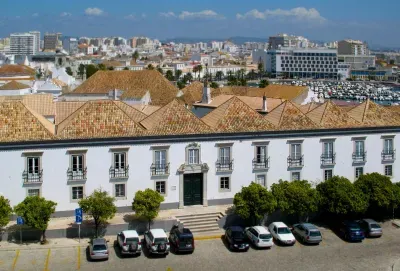
The whitewashed building of the Bishop’s Palace (Paço Episcopal), with its distinctive red-tiled roof, dominates the tranquil square of Largo da Sé in Faro's Old Town quarter.
Ermida Nossa Senhora do Repouso
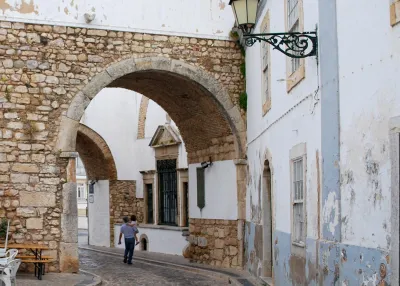
The Ermida Nossa Senhora do Repouso (Hermitage of Our Lady of Rest) is a small chapel with a Baroque-style façade. The building we see here today was mainly built in 18th century under the sponsorship of the Queen. A notable feature of the church is that it is built into the Arco do Repousa, one of the ancient Arabic arches of the defensive walls of Faro's Old Town.
